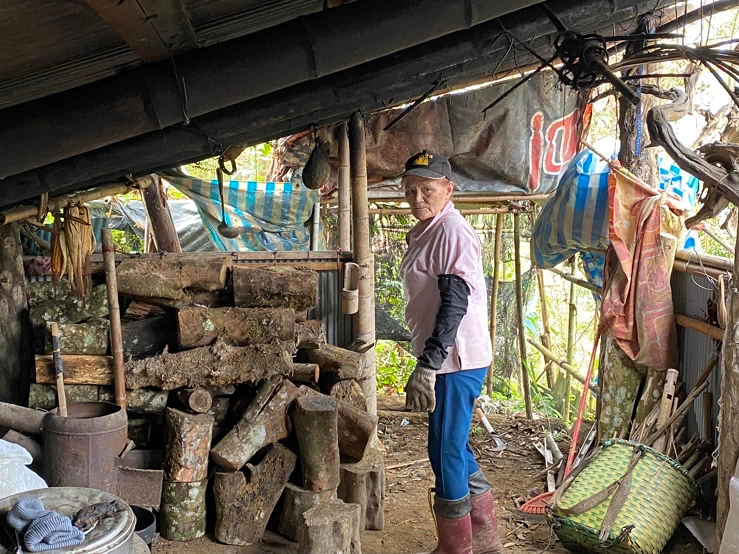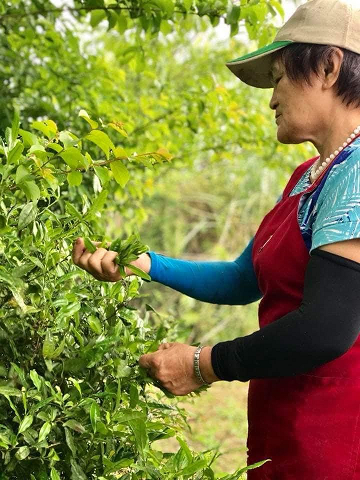The artist-in-residence program invites artists, researchers, and curators, regardless of genres, to designated institution(s) for a period of time in residency. During a residency, apart from the residents’ relevant creations, they oftentimes engage and exchange with local targets with the support and matching by the institution(s) in an attempt to inspire more diversified cultural possibilities. Should we examine the mechanism in terms of participants, the background experiences brought by residents and the feedbacks from local participants supplement each other. Such supplementation is not good or bad in preference, nor superior or inferior in experience. Instead, it is an accumulation and superimposition of the first-scene experience and bodily knowledge internalization that leads to mobilization of individual awareness via seemingly subtle perception. As far as the institution(s) is concerned, the stable operation with the existing software/hardware conditions for a long time might result in limit to creativity and imagination. Nevertheless, what one cannot deny is that the fluidity of material resources or immaterial knowledge does exist, while the benefits of output and input accessed therefrom by institution(s) are no doubt self-evident.
If we explore it from the view of Social Exchange Theory, we may find that artist-in-residence can be a response to the unfair social resource distribution as well as a revolt against the differentiation of power/position. All the participants relevant to residency can even be further divided into several levels of power hierarchy, and the collaboration, mutual assistance, and even opposition and conflict in between can all be seen as an epitome of the overall social pressure fabric, while maintaining the tension for the development and evolution of the organic system.
Hence, when Artist-in-residence serves as a mean to exploration of the resource exchange model, what we are exploring is the resource circulation model for specific “resource(s)” supplied by specific “target(s)” to specific “object(s).” Meanwhile, the two teams, Antinomy Company and Tree Tree Tree Person, introduced in this VICE VERSA Dual Solo Exhibition interpret the human postures in relation to land and resource access in the forms of display of audiovisual installations, disclosure of object and materials, performance of bodily response, and walk of physical collision.
With the term “sustainability” as the point of departure for reflection, VEINS-Antinomy Company retraces the resource collection by the human race in the ancient times, picturing the homeland and behaviors in the bodily memories of humanity through the appearances of mountains: the mountain mimicry made of metal mesh materials starts from the origin of materials instead – the excavation and refinement of metals; formation and processing of raw materials – wrinkling and weaving; and even presentation of finished product – the necessity in structural combination…entangled altogether. The artificial traces seen here and there are in fact responses to the force majeure of the natural order, serving as imitation of and submission to nature in all aspects. Where the appeal for sustainability is treated as the aspiration for long-lasting existence in harmony, it can also be a mean to resource access for maximizing benefit at the same time. Then, does the humankind’s pursuit for sustainability stem from their preference for the environment they are situated in or from their fear for resource scarcity? Antinomy Company endeavors to create a “collective” and introduce and burden spectators’ sensory experiences with such “collective.” With bodily performance as the response to spatial sensing, it tackles the inquiries and queries over this impression of imaginary fertile land.
In the meantime, Tree Tree Tree Person - Taroko Arts Residency Project IV Part 3: Family Matters in the Mountains appears to probe from the objectified, neutral display of museum, but in fact employs art resource exchange as the core of the overall exhibition project content, delving into the diverse possibilities of resource allocation and labor landscape under the art structure. Should we review Tree Tree Tree Person’s long-term immersion in the Datong Village and Dali Village and even the expansion of the contact scope to the pan-Taroko area via walks, the Taroko Arts Residency Project served as an approach to art research and production. Through consciously guided participation, it strove to take the needs of the target participants in the exchange as the starting point. Through an artistic approach, the local needs were responded in postures that are comfortable for all parties. Expanding the thinking while touching more pan-regional spirit or content starting from the everyday “family matters” involving individuals, it sought to bestow a vivid sense to the uniform, monotonous Taroko impressions, just as the complexity that the social fabric of humanity undertakes.
With VICE VERSA as a process of encounter and cross-practice, we collect, walk, as well as revisit and contemplate so as to foster an imagination of humans with nature and the overall relationship.

